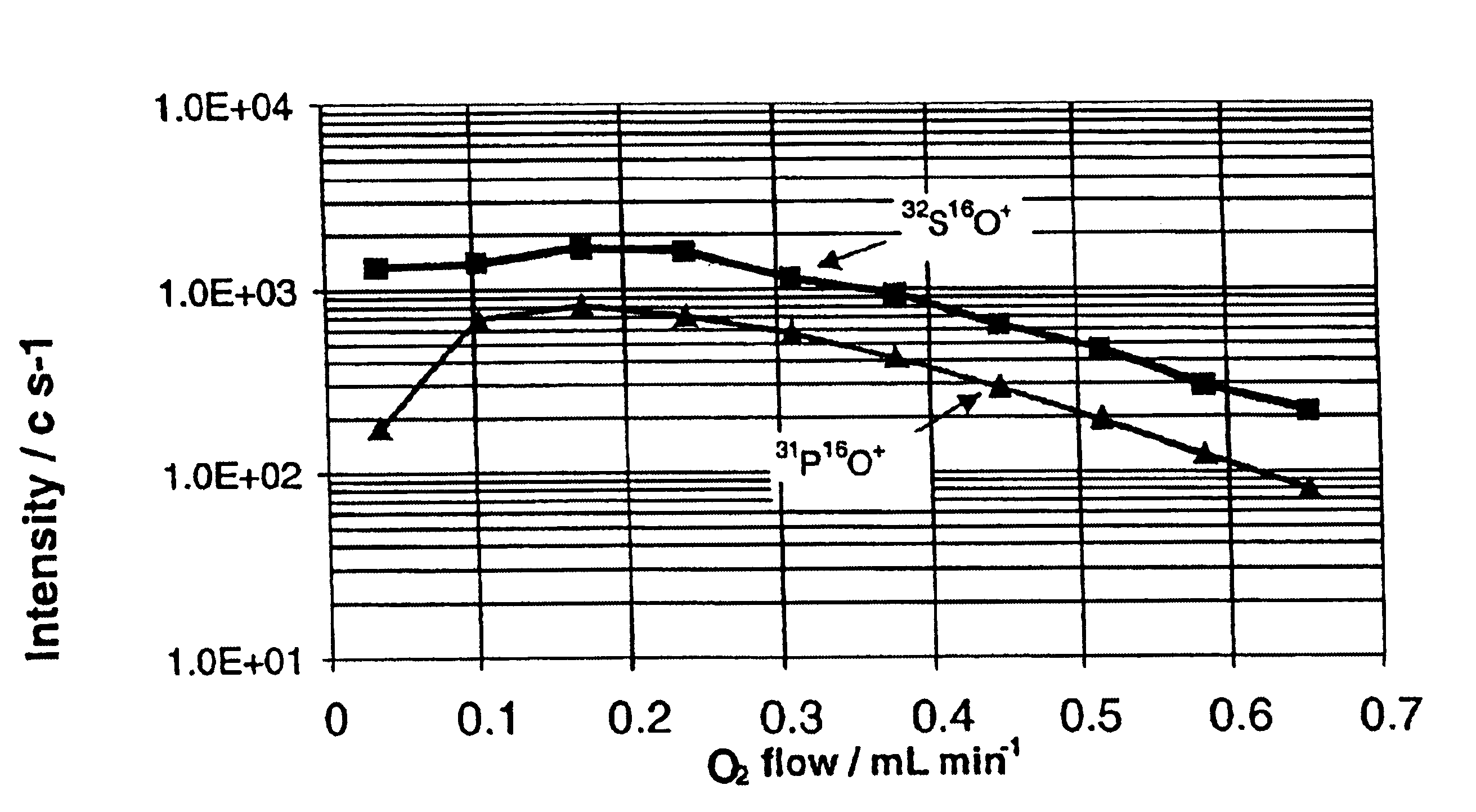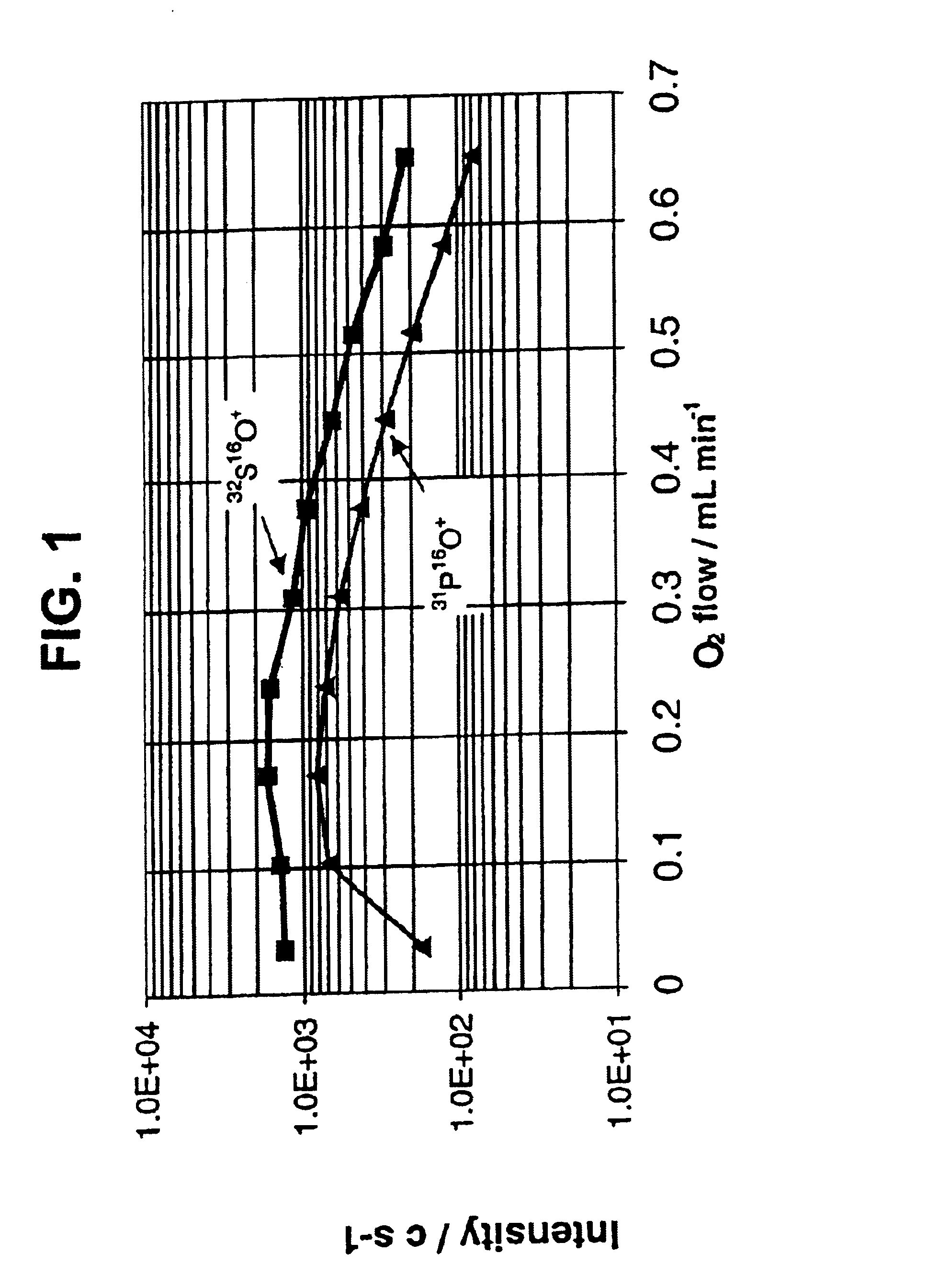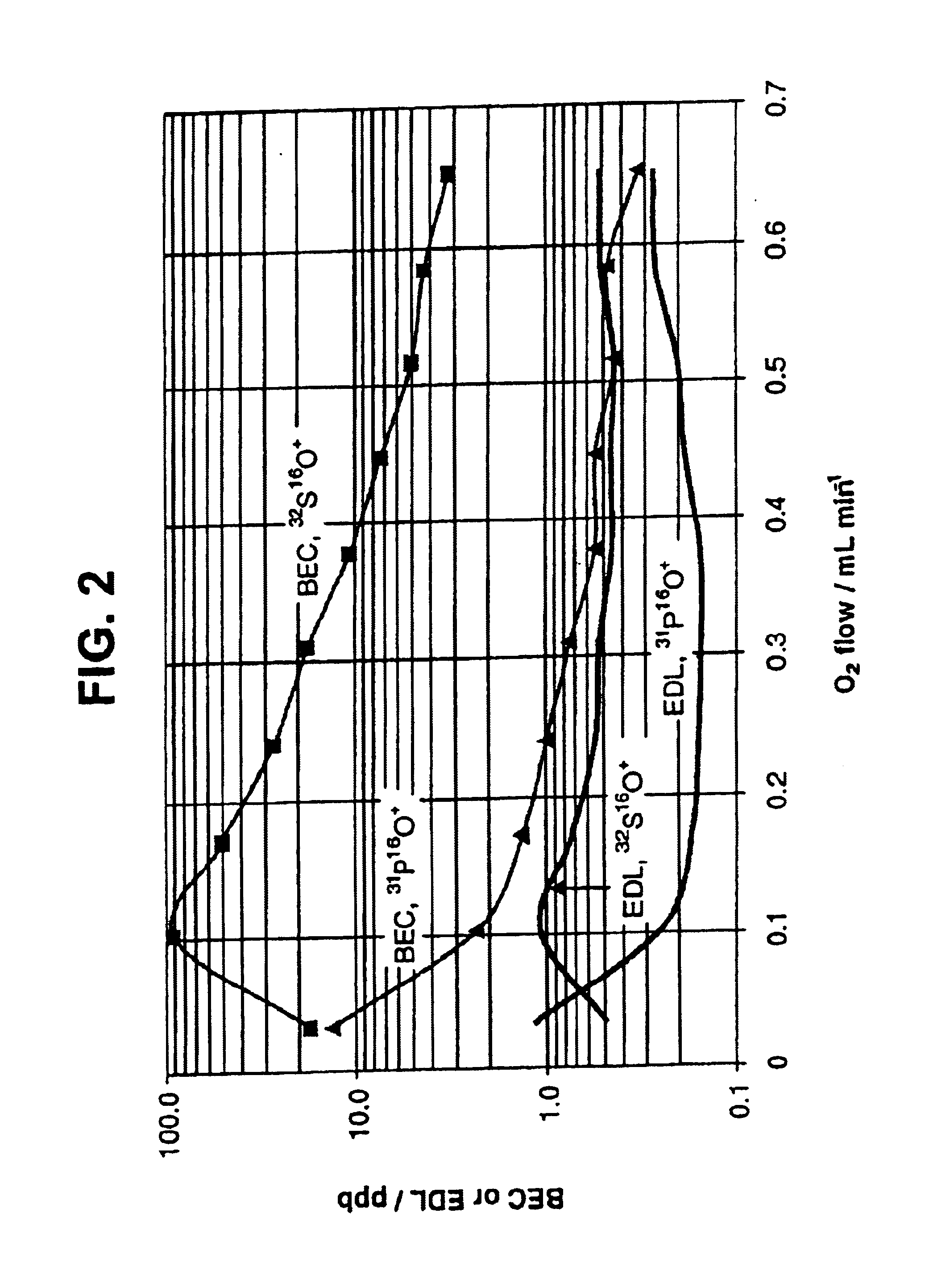Method for phosphorus quantitation
a phosphorus and quantitation technology, applied in the field of biological samples, molecular biology and proteomics, can solve the problems of not considered quantitative, laborious or hindered above methods, and high instrument cost, and achieve rapid and precise detection and measurement, improve elemental analysis, and high matrix tolerance
- Summary
- Abstract
- Description
- Claims
- Application Information
AI Technical Summary
Benefits of technology
Problems solved by technology
Method used
Image
Examples
example 1
Experimentation Using O2 as a Reactive Gas in the Reactive Collision Cell
[0061]The use of O2 as a reactive gas for oxidation, is an efficient means for the simultaneous resolution of P+ and S+ from the polyatomic interferences. Product ions of PO+ and SO+ were detected. Relevant reaction enthalpy change ΔHr was calculated using thermochemistry data (Lias et al, 1988), and most of the thermal rate constants have been reported (Anicich 1993) and summarized in the Table I below.
TABLE 1Reaction data for P+ and S+ and relevant interfering ionsThermal reactionReactionrate constantenthalpy changekr / molecule−1#1. ReactionΔHr / kcal / molecm3 s−11P+ + O2 = PO+ + O−71.44.9 × 10−102S+ + O2 = SO+ + O−6.22.3 × 10−113CO+ + O2 = CO2+ + O−13.5 −14(no reaction)4HCO+ + O2 = COOH+ + O3.3 −13(no reaction)5NO+ + O2 = NO2+ + O57.4 −11(no reaction)6NOH+ + O2 = NO2+ + O19.3No data7O2+ + O2 = O3+ + O102.1No data8Ti+ + O2 = TiO+ + O−46.15.0 × 10−10
[0062]Reactions for P+ and S+ were both exothermic, with P+ react...
example 2
Detection and Measurement of Phosphorus and Sulfur in Spiked Deionized Water
[0064]Typical mass spectra of a sample containing 10 ppb of P and S in deionised water (DIW) and of the DIW collected under these conditions are shown in FIG. 3. The relatively high background and detection limit for 32S16O+ is likely to be limited by the presence of sulfur in the blank, as the measured ratio 34S16O+ / 32S16O+=0.0477 is close to the natural abundance ratio (0.0443).
[0065]Thus, the method allows chemical resolution of P+ and S+ from typical ICP MS interferences and detection at the level of sub-ppb (picogram / microliter) while using low-resolution ICP-MS. Moreover, the detection capability is relatively independent of the sample content. An example of the mass spectrum for the sample containing 100 ppb of P in a digest buffer containing 5% CH3CN+5% CH2O2 and 1 mM of NH4HCO3 as shown in FIG. 4 demonstrates that BEC of about 2 ppb for P is achievable for such a high content of interfering elements...
example 3
Determination of the Degree of Phosphorylation in Purified β-casein
[0066]A low resolution ICP-MS was used to determine the degree of phosphorylation of the purified protein β-casein. The reactive gas was O2. FIG. 5 shows mass spectra for samples containing 0, 100 and 1000 femtomole / microliter of β-casein in digest buffer of the same composition as described above. The response for PO+ was linear in the range of β-casein concentrations from 0 to 1000 femtomole / microliter (see FIG. 6). The ratio PO+ / SO+ in the studied protein concentration range varied from 1.18 to 1.29.
PUM
| Property | Measurement | Unit |
|---|---|---|
| inductively coupled plasma mass spectrometer | aaaaa | aaaaa |
| mass to charge ratio | aaaaa | aaaaa |
| pressure | aaaaa | aaaaa |
Abstract
Description
Claims
Application Information
 Login to View More
Login to View More - R&D
- Intellectual Property
- Life Sciences
- Materials
- Tech Scout
- Unparalleled Data Quality
- Higher Quality Content
- 60% Fewer Hallucinations
Browse by: Latest US Patents, China's latest patents, Technical Efficacy Thesaurus, Application Domain, Technology Topic, Popular Technical Reports.
© 2025 PatSnap. All rights reserved.Legal|Privacy policy|Modern Slavery Act Transparency Statement|Sitemap|About US| Contact US: help@patsnap.com



